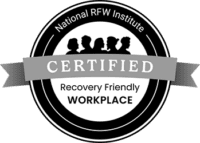Curt Steinhorst and Bob Gold Discuss Distraction and Healthcare in the Age of Technology
Curt Steinhorst featured GoMo Health in his latest book, Can I Have Your Attention? Inspiring Better Work Habits, Focusing Your Team, and Getting Stuff Done in the Constantly Connected Workplace. Last month, Bob sat down with Curt to discuss technology, our struggles to maintain productivity, and the ways that we can adapt in the workplace.
GoMo Health and our client, Hackensack Meridian Health at Pascack Valley Medical Center, were mentioned in the section of the book that discusses technology. Does technology sap or save attention resources in the workplace? At Pascack Valley Medical Center, technology is saving attention resources through their use of our Concierge Care® solutions.
Read Bob and Curt’s discussion below:
BG: What inspired you to get into this area? Was there an aha moment where you said, “Hey this is really what I want to focus on in my life”?
CS: In a lot of ways, it was the merging of my personal and professional worlds. My background is the study of rhetoric and communication and how we communicate with one another. After being the in-house consultant for a major speakers agency, I launched out on my own to help grow large platforms in the paid speakers market. In so many ways, I was truly living my dream. By the time I was 27, I had had the chance to work with some fascinating people that I never thought I would have gotten to know, much less have a close relationship with.
And yet, I wasn’t able to get my work done. There was actually a particular moment where an NFL hall of famer who happened to be my grandmother and my grandfather’s favorite player of all time, sent me an email for the third time that said, very nicely, “Hey, I’m still waiting on my speech, hope you’re doing well.” It was this moment where I was like, “What is going on? I’m doing what I’m passionate about, I’m doing what I’m good at, and yet I can’t get my work done.” And I looked at it and I realized that I had 22 emails started, none of them finished. I had a partially balanced checkbook (having started my own business), was actively pursuing the woman who then became my wife, and spending way too much time on Gmail chat, and so I realized something’s got to change.
About that time, I started being a major contributor to the largest generational research firm in North America. That started because the founder wanted some help with speaking, and then it turned into asking me to be the second contributor under him. I made a personal decision to get on top of it. So, it started as a totally personal mission – either that or I was going to have to move back home and live with my parents like everyone else in my generation.
After that, the generational stuff started to grow. Everyone’s complaining about millennials being on the phone all the time, and being distracted all the time, but over time I realized that it wasn’t really just that. I was having conversations around that topic while speaking on generations, and people started asking me more and more about it. Per request, I did a small group speech for a YPO group on how to approach technology with generations and distraction in mind, and that literally was just the beginning. I thought it was just going to be a side project. But that was five years ago.
And is it what you expected it to be? What have been some of the biggest surprises?
You would think that it’s young people that would be the problem. The young people who are coming into big organizations who have not been disconnected and never worked professionally without a smartphone. But really, over and over and over again, I see the problem as boomer leadership, older generational leadership, who have adopted or have certain values in the way they measure work. Their work values are all around how quick you are to respond, and having an open-door policy. You always need to be available, and it’s this culture that expects constant availability and immediate response. These values were built on a previous world where access was the great limiter – which is no longer the case. Frankly, I think the biggest surprise is that I think it’s actually the older generation driving the largest amounts of distraction at work, it’s not the younger generation.
So, when you go to a corporation and you do your thing, what’s their biggest surprise from hearing you talk? Is what you deliver what they really expected, or are they surprised to learn these things?
I think that there’s a series of aha moments. What no one is surprised by, is that we’re distracted, and the way we’re working isn’t working. Frankly you could probably do an entire speech just saying all the things that are wrong. I think the places that we start to really see inroads and aha moments are around understanding the science and limitations of the brain as it relates to attention. Recognizing there are some simple things that we can do to adjust the way that we’re structuring our workday, and the way that we’re structuring team meetings, based entirely on the fact that our brain doesn’t have the capacity to extend focus.
I think one of the things that I always forget is, I want to get into some of the deeper concepts, but it’s actually some of the simpler things that I think are obvious but most people don’t. Things like this: you are not wired to stare at a screen all day. You are not wired to look at a spreadsheet. No one is wired to focus. This is not something you’re made to do, so we have to hack the system. Some of the hacks are classic time management principles: like chunking your emails – meaning, respond in intervals, don’t respond every single moment.
However, a lot of the principles are understanding how these factors influence us and then putting that into a world that is different than any previous world. For instance, one of the categories we talk about is physical space. This completely “open office” trend, that over 70% of businesses use, it’s utterly nuts. How do we at least create some physical barriers for focus?
But even more, how do we better handle our virtual space? Most people at work just open new tabs to account for things they don’t want to forget — and in no time they have 24 tabs, three screens, email pushing at them, calendar reminders pinging … no wonder so many people think they don’t like their job! It’s that all of those small visual cues are wrecking their ability to stay focused. We need to go to a single screen, single tab, and do the work that is most important. None of it is really complicated, but we have to have an entirely different framework for approaching it. In particular, we have to be realistic about our limited attention resources, rather than thinking those resources are infinite and that we should be able to manage everything at once.
What about our story at Hackensack Meridian Health at Pascack Valley Medical Center resonated with you when writing your book?
One of the interesting situations I find myself in is people assume that I’m anti-technology. So Focuswise: Technology was a section to help clarify that technology isn’t the problem; bad technology is the problem. Technology without good guardrails is the problem.
When we connected, there’s a couple things that I found particularly compelling. The first one was that it is in a space that is lagging. Healthcare is a place that I’ve done quite a bit of work in, and without naming names, talking to the CEO of a major hospital system, his explanation was that healthcare is 10-15 years behind in finding ways to solve a problem.
The second one was the fact that you’re a small, more agile organization, which is a reminder that some of the best stuff taking place to solve these issues is not from the big dinosaurs. It’s in tech, it’s from small teams that find a particular pain point that is costing people significant resources, and they create a product or a tech solution that solves it. It allows people to put their attention resources somewhere else.
My entire job is to help organizations think of how they utilize and effectively allocate their attention resources, knowing it’s the most limited commodity they have. GoMo Health uniquely does that for hospitals. And so that is the reason I got so excited when we connected.
In a world that we can’t get out of – this world of unlimited access and constant stimulation – one of the biggest keys is to find particular technology that is not just new, it’s not just exciting, but it’s very specifically eliminating and solving the issue of how attention resources get diverted to inefficient and unhelpful processes. Meaning, the customer doesn’t even get a better experience because you’re hands-on in this case. The team doesn’t get better performance or culture building because you’re doing this project, it literally is sapping all of the things, humans aren’t meant to do it.
Yes, I think bad technology is pervasive in many industries. It’s especially pervasive in healthcare because the attention focus is on filling out some piece of technology so it gets recorded, not on providing customer service. We’re not focusing on the issue you’re trying to solve. A more overall issue is that people tend to go from one thing to the next without taking 10 minutes before a meeting to take a deep breath and to prepare and to think through the dynamics. You’re not accomplishing nearly what you could, but in today’s world, people think they’re wasting 10 minutes to do that. They’re too transactional and that causes you to accomplish a lot less. I think those are some of the byproducts of the perception of technology usage.
That’s right. For sales teams, one of the things I often talk about is the hidden cost of feeling the reward of replying to that email on your phone. You can get one more email in as you walk in (unprepared) and give the same presentation, rather than one that is actually thought out for this particular customer. We get excited to divert and to try to knock off small tasks and we ignore the space. But then we end up devaluing the very human things that can be distinct competitive advantages: our capacity for creativity, effective communication, strategy, and emotional connection. As technology continues to automate and become more intelligent, these advantages are at risk when we allow technology to drive the pace and the lack of space. The great irony is that tech is designed to help us have more space for those things, but it ends up robbing us of the only things that we would have any advantage over technology as we move forward.
I think the term bad technology is interesting because it’s saying that the ingredient itself is bad. If you could pick one tip in the overall approach to leveraging technology in the right way, what would that be? Also, outside the world of technology, is there a personal recommendation and tip you can give?
When I say bad technology, there are two categories in my head. One: there’s bad technology. Literally, people are still using 15-year-old Excel programs. So, there is literally technology that is bad. When I say get better technology, get newer. Two: there is also this big category of technology that is excellent but you’re just not in control of it. If I were to pick one tip when it comes to technology, it’s that you have to ask the right questions. Not: is this cool? Is this fun? Does this give me information faster?
Instead, ask: Is this actually increasing my efficiency, or is it leading to exhaustion? Is this promoting focus for me? Ultimately at the end of the day is this getting me more of what I want? I think we just need to start with some questions before we move into decisions. Practically, when it comes to tech choices, I think the number one thing I would say is you need to have ways to take control of the push. Meaning, you need to be able to turn off its capacity to interrupt. There are things inside the tech and there are things out of it that can do that.
The number one non-tech tip for me is definitely that you have to have a conversation with stakeholders. We communicate about everything except for how we’re going to communicate. Stakeholders in this context are your team, your family, your main contacts. Sit down and have a two-minute conversation with each of them and discuss:
- Accessibility – When do we not have to be accessible to each other? My wife doesn’t expect to hear from me during the day, but she also gets two hours at night when I walk in the door. Now, I get more at work and I get more at home, and everyone’s happy.
- Channel choice – This is probably the most important one that no one thinks about. What happens at work often is I send an email to someone, and they don’t reply immediately. So, I go to the messaging app, I see if they’re available, I send them a message, they don’t answer. I shoot them a text, I give them a call, I drive to their house, I knock on their door, I do it all. But it’s been two minutes, and they are just in the bathroom. Too many messages, too many channels, no clarity or purpose to any of them. Deciding that this is the channel we’re going to talk on, and for emergencies and urgent situations, you go to the least used channel (which usually means we call them on the phone). Otherwise, you can’t be mad if I don’t reply immediately.
A stakeholder conversation is the thing that I think is the most rapid route to reducing the volume that creates the interruptions.
Thank you for your time, Curt!
Learn More About the Book!
About Curt Steinhorst
 Diagnosed with ADD as a child, Curt has spent thousands of hours studying the impact of technology on human behavior. Curt founded Focuswise, a consultancy that equips organizations to overcome the distinct challenges of the constantly-connected workplace. He is a leading voice on strategic communication, speaking more than 75 times a year to everyone from global leadership associations and nonprofits to Fortune 100 companies.
Diagnosed with ADD as a child, Curt has spent thousands of hours studying the impact of technology on human behavior. Curt founded Focuswise, a consultancy that equips organizations to overcome the distinct challenges of the constantly-connected workplace. He is a leading voice on strategic communication, speaking more than 75 times a year to everyone from global leadership associations and nonprofits to Fortune 100 companies.







Find Us Online